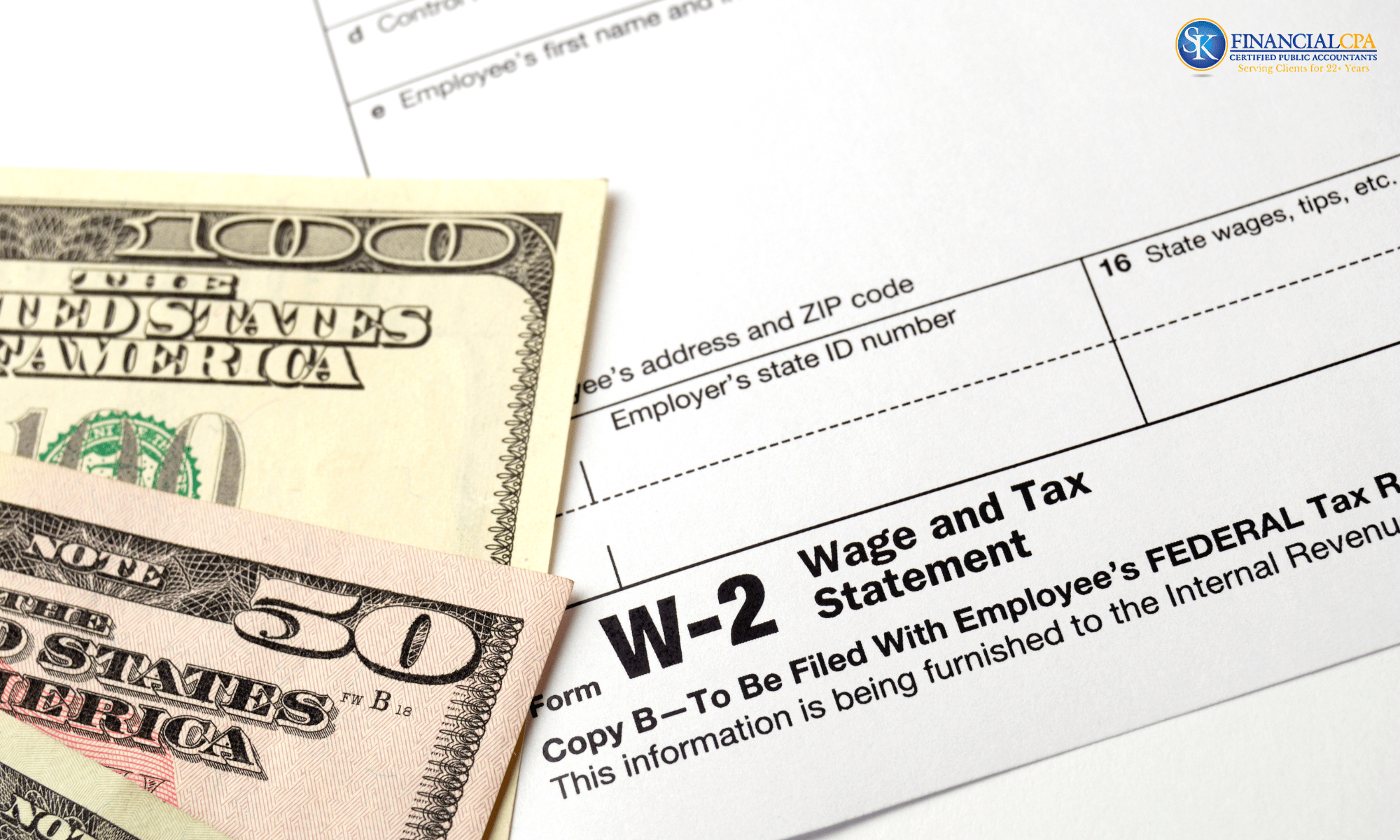
What is W-2 form and How to Read It: Wage and Tax Statement
Charge season can feel like an overwhelming labyrinth of desk work and cutoff times, particularly in the event that you should be more knowledgeable in charge of records. The W-2 structure stands apart as essential, holding the way to smooth-duty documenting. This guide jumps into the subtleties of the W-2, assisting you with figuring out its intricate details so you can handle charge season certainly.
What Is W-2 Structure: Assessment and Compensation Articulation?
Structure W-2, known as the Expense and Compensation Proclamation, is a report given by managers to their representatives. It reports the worker's yearly wages and how much assessment is kept from those wages. We should break down what Structure W-2 incorporates:
Representative Data
This incorporates the representative's name, address, and government-managed retirement Number (SSN), as well as the business name, address, and Boss Distinguishing proof Number (EIN).
Wage Data
Structure W-2 reports different sorts of pay received by the representative during the fiscal year. It incorporates compensation, pay, tips, rewards, and other available pay. It likewise incorporates any elective deferrals to retirement plans, for example, commitments to a 401(k) or 403(b) plan.
Charge Holdback
Structure W-2 subtleties how much government annual expense, state personal duty (if relevant), and different charges kept from the representative's wages consistently. These saved portions depend on the data given by the representative on Structure W-4, Representative's Saved portion Declaration, which shows the worker's recording status and stipends.
Other Data
Structure W-2 might incorporate extra data, for example, commitments to retirement plans, health care coverage expenses paid by the representative, and other incidental advantages given by the business.
Boss Commitments:
If pertinent, Structure W-2 may likewise incorporate manager commitments to retirement plans, for example, matching commitments to a 401(k) plan.
Peruse more about actually looking at discount status.
Read more about Check Refund status
How Does the W-2 Frame: Pay and Duty Explanation Work?
Structure W-2, otherwise called the Compensation and Expense Explanation, fills in as a record of a representative's pay and duty savings all through the fiscal year. This is the closely guarded secret:
Business Issuance: Managers are accountable for giving Structure W-2 to their representatives. They should produce and disseminate Structure W-2 to every representative by January 31st of the next year. Managers likewise send a duplicate of Structure W-2 to the government-backed retirement Organization (SSA) for charge detailing purposes.
Worker Data
The w2 structure incorporates fundamental data about the representative, like their name, address, and Federal retirement aide number (SSN), as well as the business name, address, and Manager Recognizable proof Number (EIN). This data guarantees the exact ID of both the representative and the business.
Wage Detailing
The w2 structure reports different kinds of pay procured by the worker during the fiscal year, including compensation, pay rates, tips, rewards, and other available remuneration. It likewise incorporates any elective deferrals to retirement plans, for example, commitments to a 401(k) or 403(b) plan.
Charge Holdback
w2 structure subtleties include how much government personal expense, state annual assessment (if appropriate), and different charges kept from the worker's wages consistently. These portions depend on the data given by the representative on Structure W-4, Representative's Portion Testament, which shows the worker's documenting status and stipends.
Charge Revealing
Representatives utilize the data given on Structure W-2 to precisely report their pay and charges while documenting their government and state personal expense forms. They normally get Structure W-2 in January and should utilize this data to finish their expense forms by the assessment documenting cutoff time, which is generally April 15.
Recording and Confirmation
After getting Structure W-2, representatives ought to survey it cautiously to guarantee that all data is precise. Assuming there are any disparities, they ought to contact their boss to demand remedies. Once checked, representatives utilize the data from Structure W-2 to finish their expense forms, either physically or with the help of duty readiness programming or an assessment proficient.
An Introduction to the W-2 Form's Vital Role
The W-2 form, officially termed the Wage and Tax Statement, is a document that shoulders a significant burden in the American tax infrastructure. Employers are mandated to furnish this form to their employees and the Internal Revenue Service (IRS) at the conclusion of each year. It meticulously records the employee's annual earnings alongside the volume of taxes withheld from their remuneration. Grasping the essence of your W-2 is not merely beneficial, it's essential for the precise preparation of your tax returns and ensuring adherence to federal tax regulations.
Dissecting the W-2 Form
At first glance, the W-2 form appears to be a daunting collection of boxes and codes. However, a closer inspection reveals a structured depiction of your financial year:
-
Box 1: Wages, Tips, and Other Compensation
This box is foundational to your tax return, as it represents the total amount of your taxable income for the year. This figure includes your salary or wages, any tips you've received, and other forms of compensation such as bonuses, commissions, and taxable fringe benefits. It's essential to understand that this is the figure before any pre-tax deductions, such as contributions to a 401(k) plan or premiums for employer-sponsored health insurance. The amount in Box 1 directly influences your tax liability, as it forms the basis of your gross income for tax purposes.
-
Box 2: Federal Income Tax Withheld
The figure in Box 2 is critical for understanding how much of your income went directly to the federal government as income tax throughout the year. This amount is determined by the information you provided on your W-4 form regarding your filing status and allowances. A key aspect of tax filing is comparing this withheld amount against your actual tax liability; if too much was withheld, you might expect a refund, whereas if too little was withheld, you may owe additional taxes. This box reflects your contributions towards your federal tax obligations and is pivotal in determining the final outcome of your tax return.
-
Boxes 3 and 4: Social Security Wages and Tax Withheld
Social Security taxes fund the Social Security program, providing benefits for retirees, the disabled, and survivors. Box 3 shows the total earnings subject to Social Security tax, which has an annual cap. The amount in Box 4 then reflects the total Social Security tax withheld from your earnings, calculated at a fixed rate. It's important to verify that the correct amount has been withheld according to the annual cap and rate, as errors can affect your future Social Security benefits.
-
Boxes 5 and 6: Medicare Wages and Tips, Medicare Tax Withheld
Medicare taxes fund the Medicare program, which provides healthcare benefits primarily to individuals over 65. Unlike Social Security taxes, there is no cap on the earnings subject to Medicare tax. Box 5 displays your earnings subject to Medicare tax, and Box 6 shows how much Medicare tax was withheld from those earnings. Given the increasing costs of healthcare, ensuring the accuracy of these contributions is crucial for your current and future financial planning.
-
Box 12: Codes
The most cryptic part of the W-2 form, Box 12 contains various codes that represent different types of compensation and benefits. Each code corresponds to a specific type of income or deduction, from non-taxable sick pay (Code J) to contributions to a 401(k) plan (Code D). Understanding these codes is vital for a complete picture of your financial year, as they can significantly impact your taxable income. For instance, contributions to a retirement plan are typically pre-tax, which can lower your taxable income and, by extension, your tax liability.
Other sections detail state tax information, indicating the state's claim on your earnings, and contributions to retirement plans, offering insights into your long-term financial planning.
Utilizing Your W-2 Form for Tax Filing
Armed with your W-2, you're equipped to tackle the task of tax filing. This document feeds directly into your IRS Form 1040, serving as the foundation for your tax return. The key here is accuracy—ensuring that the figures on your W-2 align with your personal financial records is paramount. Discrepancies, however minor, can lead to audits or penalties, making it essential to resolve any issues with your employer before proceeding with your tax filing.
Navigating Common W-2 Challenges
Despite its critical role, obtaining and decoding your W-2 can sometimes present challenges:
-
It's not uncommon for W-2 forms to go missing, either through postal mishaps or clerical errors. If you find yourself in this predicament, your first course of action should be to contact your employer for a reprint. Failing that, the IRS can assist in tracking down your missing form.
-
Discovering errors on your W-2 can be disconcerting. However, it's a solvable issue. Promptly notifying your employer is crucial, as they are obligated to issue a corrected form (W-2c) to rectify any inaccuracies.
-
In situations where your W-2 is irretrievable, the IRS allows you to use Form 4852 as a substitute. While not ideal, this provision ensures that taxpayers can fulfill their obligations without undue delay.
Conclusion
The W-2 form, with its detailed account of your annual earnings and tax contributions, is more than a mere document; it's a reflection of your financial narrative over the past year. By demystifying its components and understanding its relevance, you equip yourself to navigate tax season with assurance. Errors and discrepancies can and do occur, but with this knowledge in hand, addressing them becomes less of an ordeal. Whether you choose to tackle tax filing on your own or seek the expertise of a tax professional, a thorough understanding of your W-2 form is your first step towards a smooth and successful tax season.
FAQs
1. What is a W-2 form?
A W-2 form, officially known as the Wage and Tax Statement, is a document that employers must send to their employees and the Internal Revenue Service (IRS) annually. It reports an employee's annual wages and the amount of taxes withheld from their paycheck.
2. When should I receive my W-2 form?
Employers are required to provide you with your W-2 form by January 31st of the year following the tax year. If January 31st falls on a weekend or holiday, the deadline is the next business day.
3. What if I don't receive my W-2 by the deadline?
If you have yet to receive your W-2 form by mid-February, contact your employer to ensure it was sent to the correct address. If you still haven't received it, you can contact the IRS for assistance.
4. What should I do if there are errors on my W-2 form?
If you discover any discrepancies or errors on your W-2 form, you should contact your employer immediately. They are required to issue a corrected form, known as a W-2c.
5. Can I file my taxes without a W-2 form?
If you have yet to receive your W-2 in time to file your taxes, you may file using Form 4852, Substitute for Form W-2, Wage and Tax Statement. However, you should attempt to obtain your W-2 to ensure accurate tax filing.
6. What are the most important boxes on the W-2 form?
While all the information on the W-2 form is important, particular attention should be paid to:
-
Box 1: Wages, tips, and other compensation
-
Box 2: Federal income tax withheld
-
Boxes 3 and 4: Social Security wages and tax withheld
-
Boxes 5 and 6: Medicare wages and tax withheld
-
Box 12: Various codes representing different types of compensation and benefits
7. What is Box 12 on my W-2 form?
Box 12 contains various codes that represent different types of compensation and pre-tax contributions. Each code, from A to ZZ, has a specific meaning, such as contributions to a retirement plan or employer-sponsored health coverage. Refer to the IRS instructions for W-2 forms for detailed explanations of these codes.
8. What if I worked for multiple employers?
If you worked for multiple employers during the tax year, you should receive a separate W-2 form from each employer. It's important to ensure you use the information from all W-2 forms when filing your tax return.
9. How does the W-2 form affect my tax return?
The information on your W-2 form is used to fill out your tax return forms, such as the IRS Form 1040. It helps to determine your taxable income, tax liability, and any potential refund or additional taxes owed.
10. Can I access my W-2 form online?
Many employers offer electronic W-2 forms through their payroll or HR systems. If available, you can access and download your W-2 form online. Check with your employer to see if this option is available to you.
Follow SKFinancial on Facebook / Twitter / Linkedin / Youtube for updates.








